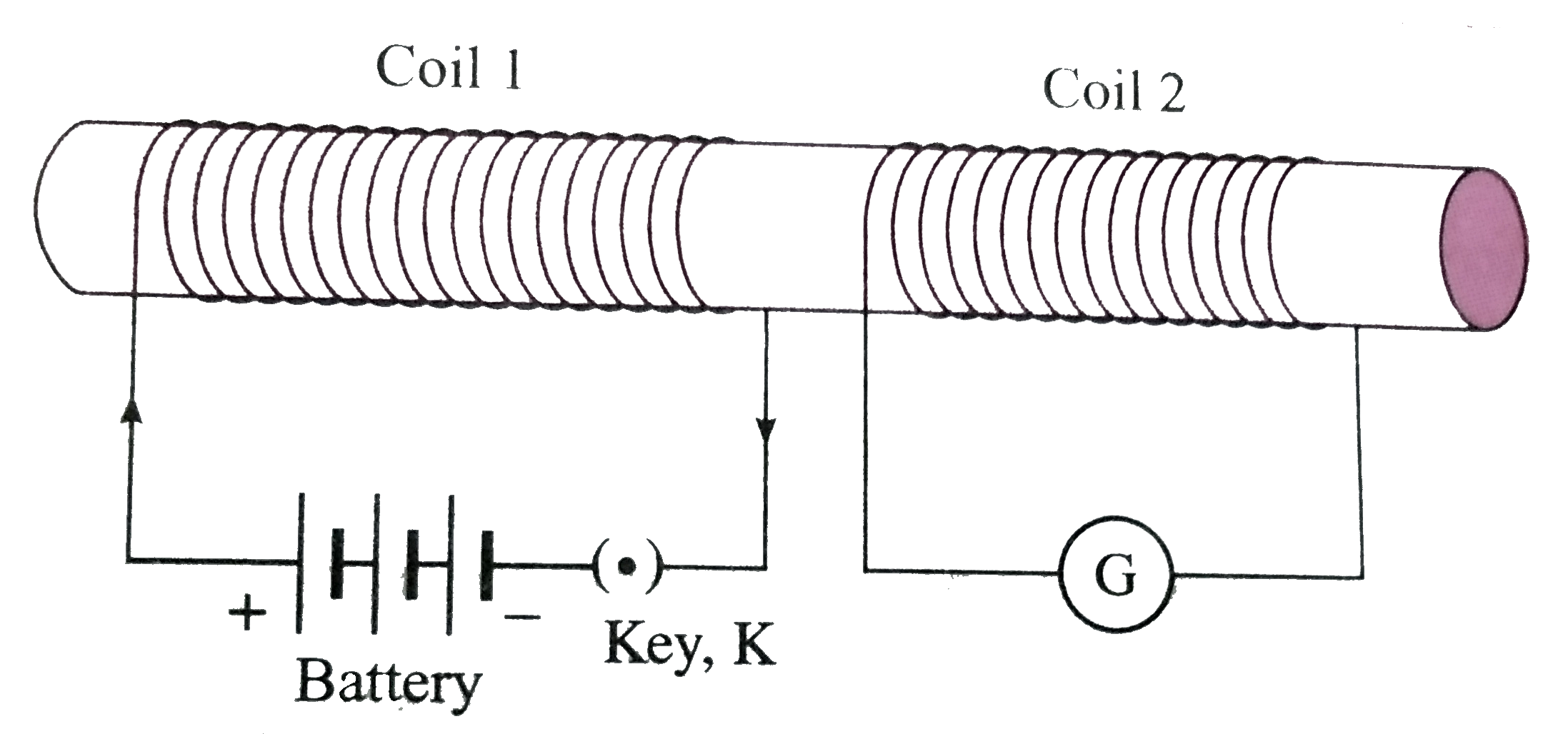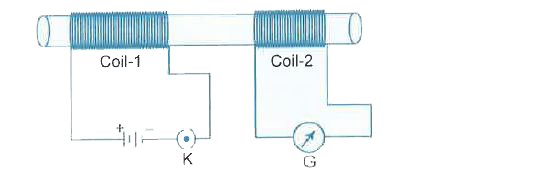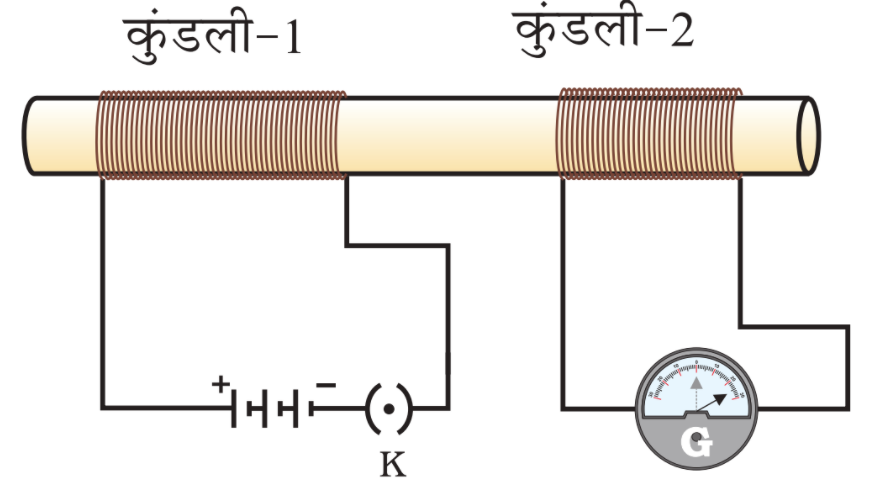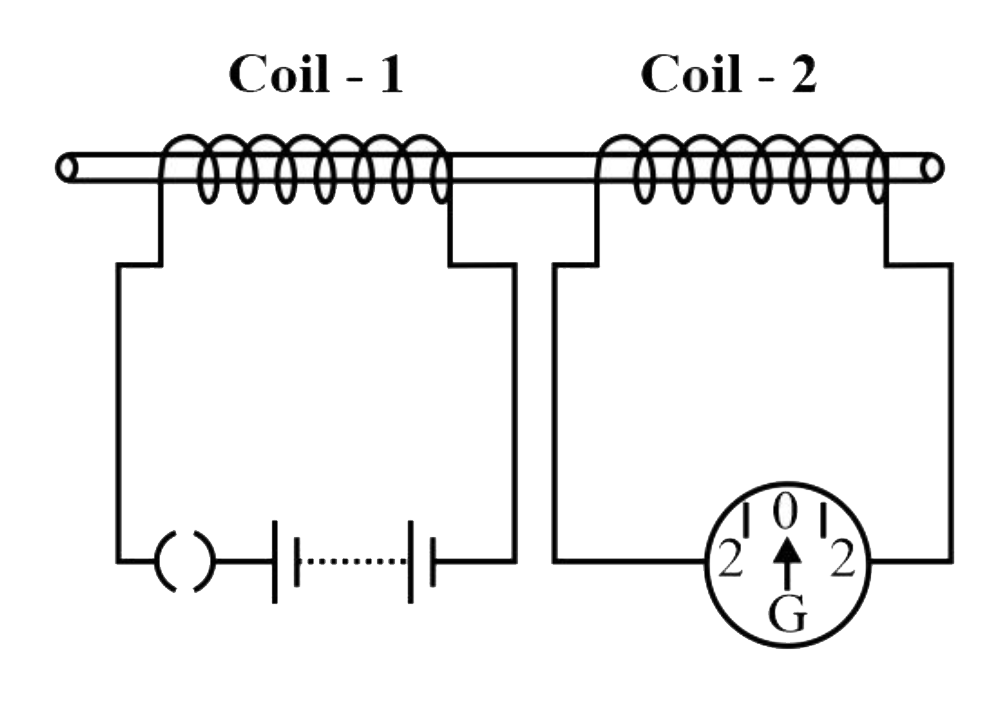Take two coils of about 50 turns. Insert them over a nonconducting cylindrical roll as shown in Fig. 4.23. (A thick paper roll can be used.) Connect coil 1 to a battery with a plug key K. Connect coil 2 to a galvanometer G. (1) Plug the key and observe the deflection in the galvanometer. (2) Unplug the key and again observe the deflection. Note your observations. What conclusions do you draw from these observations?

Observations: (1) When the key is plugged, the galvanometer shows a momentary deflection. When the current in coil 1 becomes steady, the galvanometer shows zero deflection, i.e., its pointer returns to the zero mark at the centre of the scale.
(2) When the key is unplugged, the galvanometer shows a momentary deflection in the opposite direction relative to that in part(1) of the experiment. When the current in coil 1 becomes zero as the circuit is broken on unplugging the key, the galvanometer shows zero deflection, i.e., its pointer returns to the zero mark at the centre of the scale.
Conclusions : As the current in coil 1 changes, the magnetic field associated with the current changes. This induces an electric potential difference in coil 2 which gives rise to an electric current and hence the deflection of the galvanometer. The direction of the induced current and hence that of the deflection of the pointer in the galvanometer depends on whether the current through coil 1 increases or decreases with time.
When there is a steady current in coil 1, there is no change in the associated magnetic field and hence no production of induced potential difference in coil 2. In that case there is no current in coil 2 and hence the galvanometer shows zero deflection.
Similar Questions
Two coils of insulated copper wire are wound over a non-conducting cylinder as shown. Coil 1 has comparative large number of turns. State your observations, when

(i) Key K is closed. (ii) Key K is opened
Give reason for each of your observations.
View SolutionTwo coils C_1 and C_2 are kept coaxially as shown the coil C_1 is connected to a battery and the coil C_2 is connected to a galvanometer. The deflection in galvanometer can be increased by
View SolutionTwo coils of insulated copper wire are wound over a non - conducing cylinder as shown in figure 13.28. Coil 1 has larger number of turns . (1) Write your observation when , (a) plug key k is colsed and (b) plug key k is opend . (2) Give reason for your observation . (3) Mention the name of the phenomenon involved and define it . (4) Write the names of two coils used in this experiment . OR What are these coils called ?
View Solutionचित्र में दर्शायी गयी व्यवस्था में दो कुंडलियाँ किसी अचालक बेलनाकार छड़ पर लिपटी हैं। आरंभ में प्लग में कुंजी नहीं लगी है। इसके पश्चात् प्लग में कुंजी लगाकर फिर हटा ली जाती है। तब

View SolutionIn the arrangement shown in figure,there are two coils wound on a non-conducting cylinderical rod.Initially the key is not inserted.Then the key in inserted and later removes.Then, A. The galvanometer will not deflect B. The galvanometer will deflect in one direction when the key is inserted and in the opposite direction when the keys removed C. The galvanometer will deflect in one direction when the key is inserted and remain still when the key is removed . D. The galvanometer will deflect in one direction when the key is inserted and in the same direction when the key is removed .
View SolutionTo locate null point, deflection battery key K_(1) is pressed before the galvanometer key K_(2) . Explain why?
View SolutionA non - conducting cylindrical rod is inserted within two coils of insulated wires, as shown in the given figure. A battery is connected to coil 1 , while a galvanometer is connected to coil 2

On switching on the current in coil 1,
View SolutionAnswer the following questions : Take two coils of about 50 turns. Insert them over a nonconducting cylindrical roll as shown in fig. A thick paper roll can be used . Connect coil 1 to a battery with a plug key k. Connect coil 2 to a galvanometer G. plug the key and observe the deflection in the galvanometer. Unplug the key and again observe the deflection. Note ( your observations. What conclusions do you draw from these observations?
View Solution
